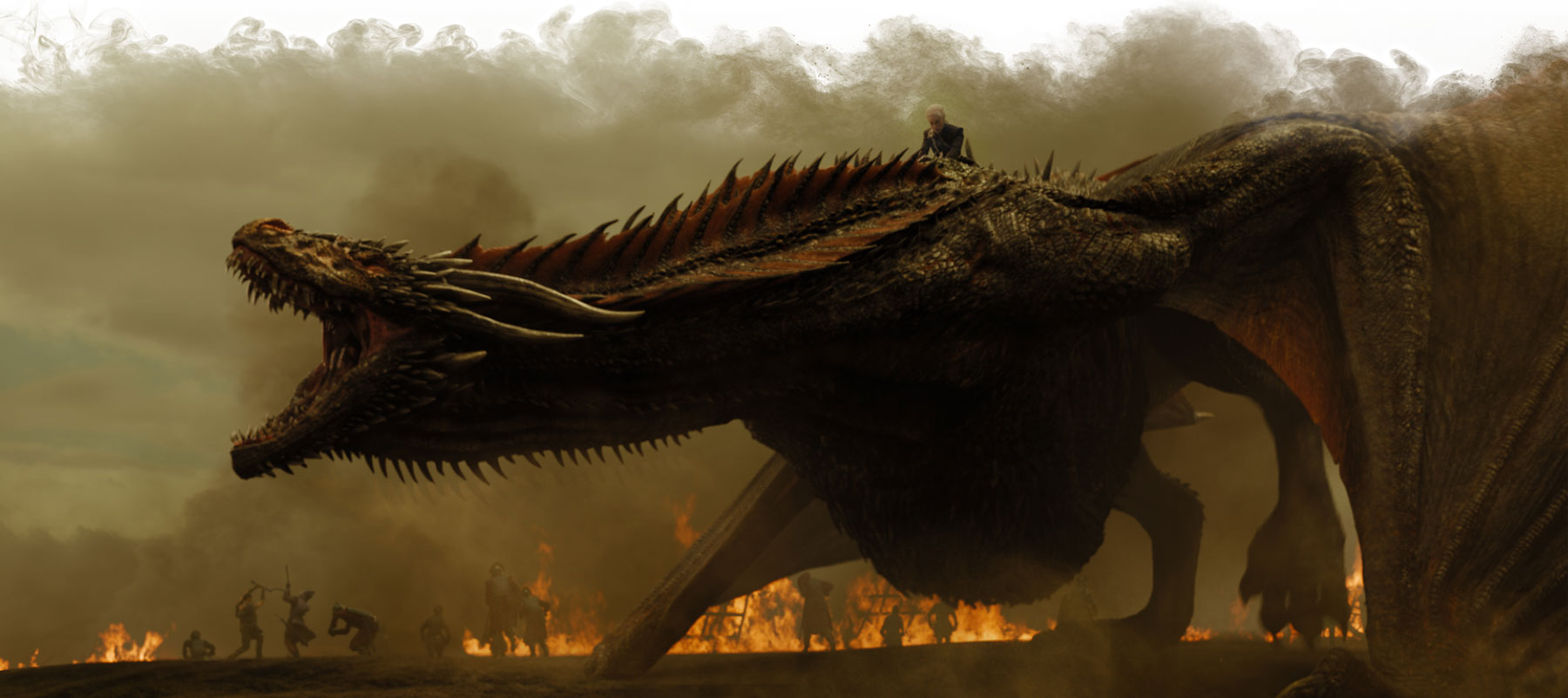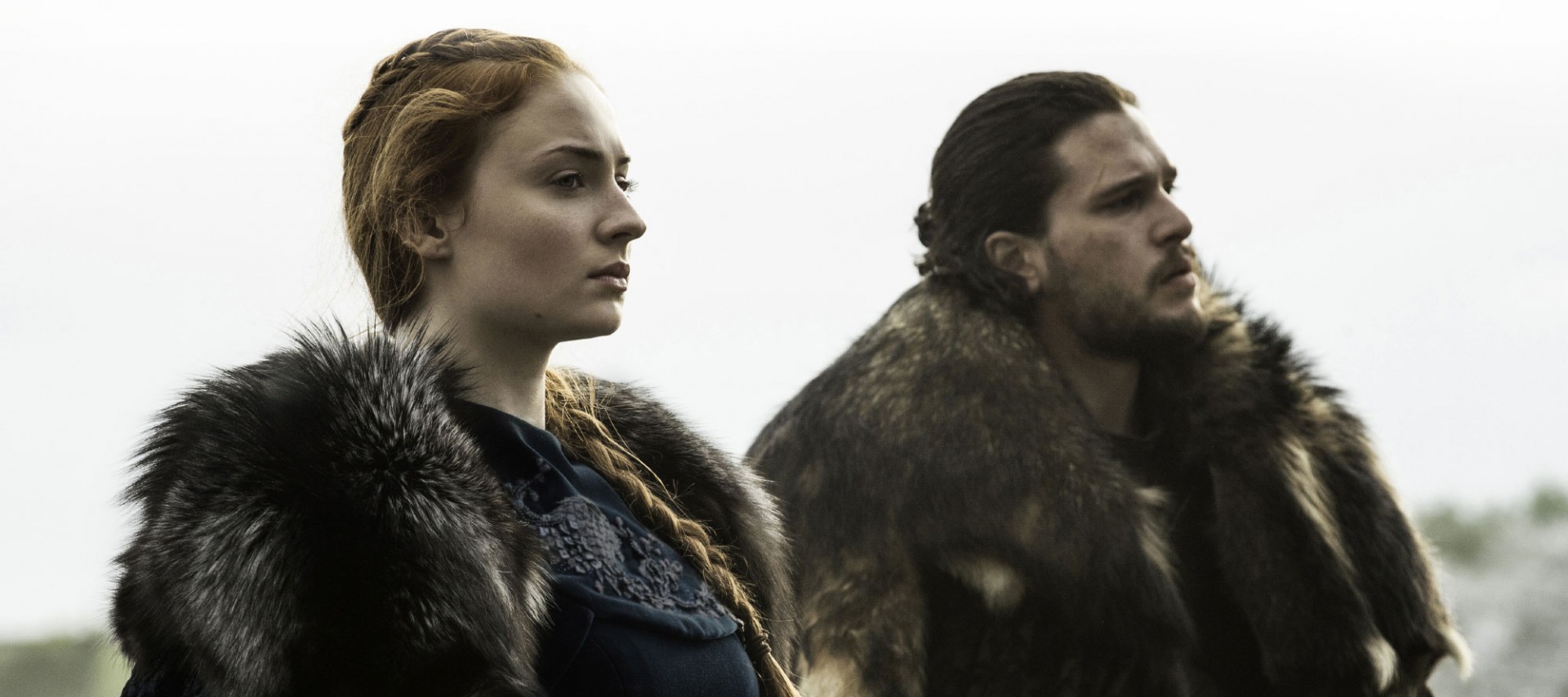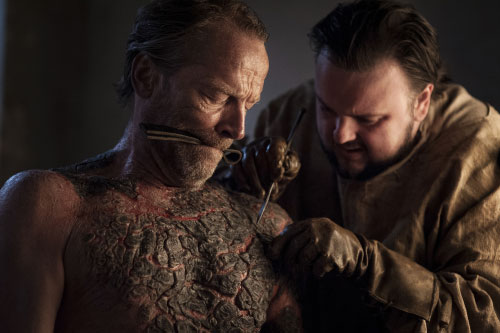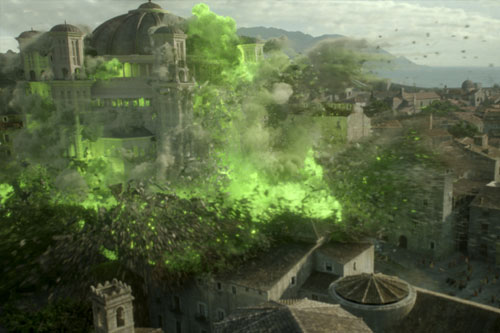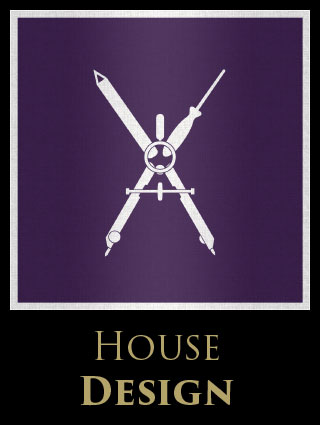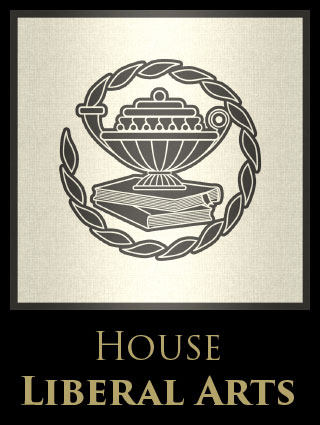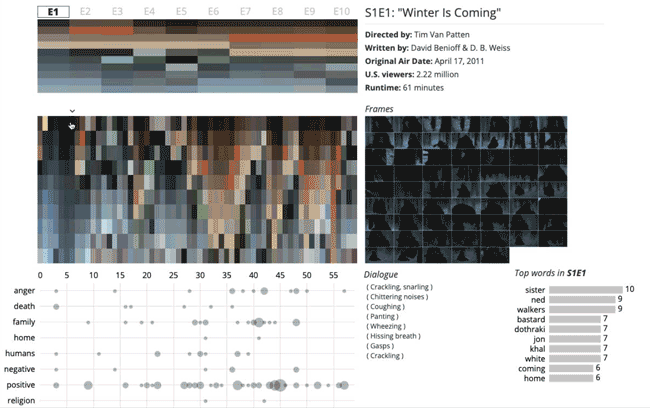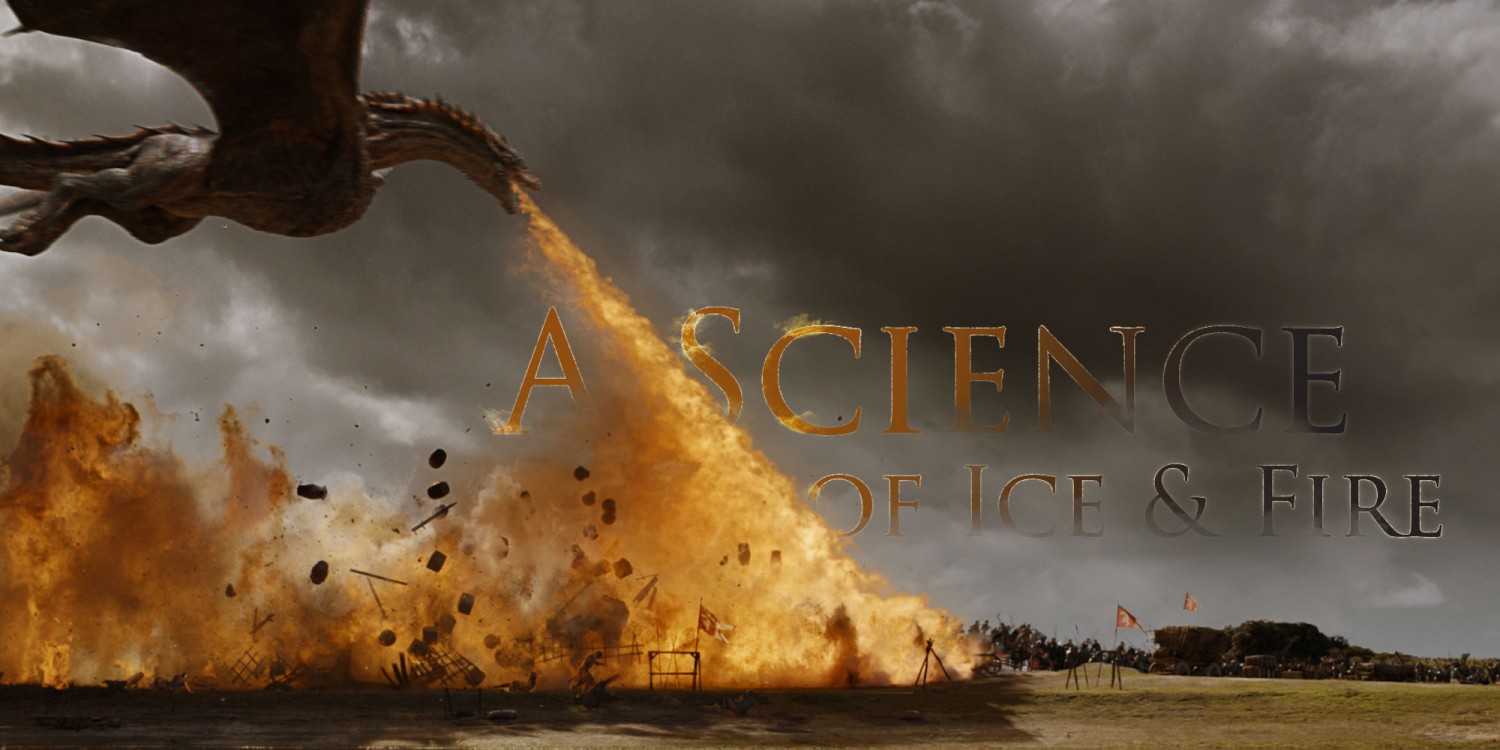
April 10, 2019
Game of Thrones is more than a global media phenomenon. Enormously popular with college
students, the show is a hot topic in classrooms, where it offers lessons in areas as diverse as
story structure, languages and cultures, power dynamics, and the art of war.
In anticipation of the final season of the seminal television program, we approached students and faculty to explore some of the possibilities Game of Thrones holds beyond entertainment.
Dancing with Dragons
It isn’t a particularly bold supposition that dragons are a formidable weapon. Still, we wondered: exactly how much of an impact would a dragon have on a battlefield? Chandler Thornhill, a graduate student in economics, and Matthew Redington, a graduate student in computer science, offered to devise a few simulations.
Both are currently enrolled in the course Modeling, Simulation, and Military Gaming, an interdisciplinary, project-based class requiring collaboration across a range of backgrounds and skills. Groups of students spend a semester researching and dissecting historical battles, using this deep understanding to adjust variables and outcomes through computational modeling.
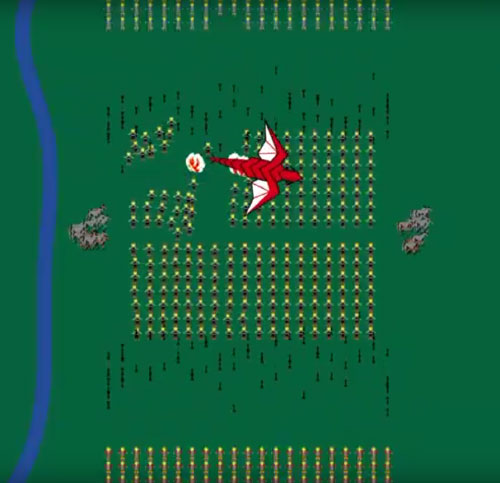
Creative visual of a simulated dragon in battle
Introducing fantastical elements may seem an inconsequential exercise, but to one of its instructors, Sam Nunn School of International Affairs Assistant Professor Mariel Borowitz, introducing pop culture elements allows students to connect with modeling simulations in a different way.
“One of the things I like about bringing dragons into a simulation is that you really have to go through the same research process,” she said. “You have to be rigorous in how you find data and how you make assumptions. Obviously, there’s not a lot of data available on a dragon’s efficiency but you can look at the information sources available as a basis to formulate and justify assumptions. It shows the process can be applied in all sorts of areas.”
So how much of a difference did the dragon have? By their calculations, roughly 70 percent of opposing forces were turned to ash.
Video: Georgia Tech graduate students Matt Redington and Chandler Thornhill used military modeling simulation software to insert a dragon into the historic battle of Cannae.
Merging Media: Breaker of (Narrative) Chains
More than 20 years ago, in her seminal book Hamlet on the Holodeck, Janet Murray, the Ivan Allen College Dean’s Professor, predicted the rise of a new genre of deeply complex narrative driven by the marriage of television and computer.
It would be what she called the “hyperserial.” Plot, backstory, and detail too fine to showcase
in an hour-long drama would pass back and forth between television screen and computer screen,
high-speed digital transmission of content would enable new ways of accessing stories, and
narrative would, as a consequence, grow richer and more complex.
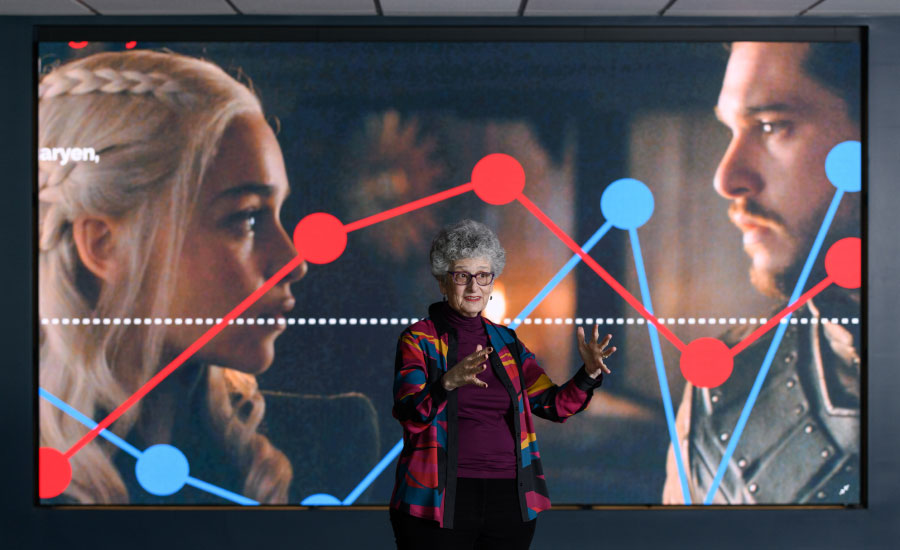
“The confusion we feel in viewing programs like Game of Thrones, and the immersion that draws us to them, are signals to me that these stories are outgrowing the classic television format.”
Nowhere has the promise of complex narrative storytelling been so fully realized as HBO’s
adaptation of George R.R. Martin’s A Song of Ice and Fire novels. So it is no surprise
that Murray and her students in the college’s Digital Media program have used those stories to
test her hypothesis.
“The confusion we feel in viewing programs like Game of Thrones, and the immersion that draws us to them, are signals to me that these stories are outgrowing the classic television format,” Murray said.
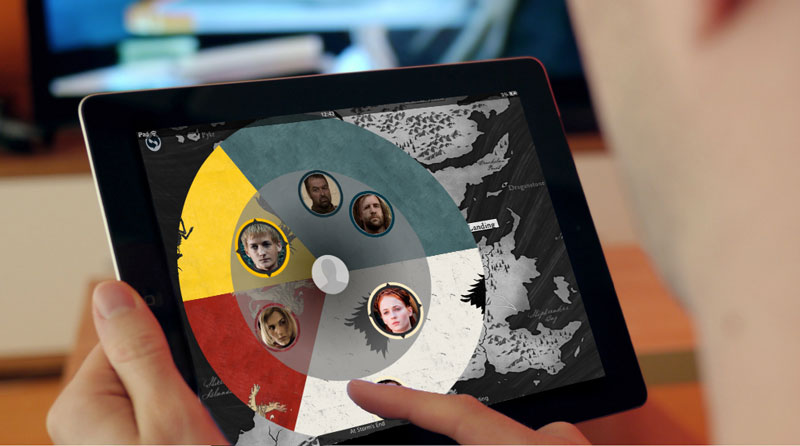
Game of Thrones Companion from Janet Murray's Prototyping eNarrative Lab
In recent years, Murray’s students in the Prototyping eNarrative Lab (PeN Lab) have prototyped a companion app meant to help fans keep track of the dozens of characters, backstories, alliances, and antipathies that make up the dizzyingly complex world of Westeros. Working with Murray, they also have built an application to help viewers track the many plots of Game of Thrones, and the fates of its characters.
The companion tablet app provides a moment-by-moment window into a Game of Thrones episode, automatically serving information about onscreen characters and their relationships without user intervention.
The Digital Story Structure Project graphed the fall and rise of characters, showing, for instance, the opposite fates of Daenerys Targaryen and Jon Snow early in the series, followed by the merger of their fates in season 7.
“I am interested in prototyping the future of narrative,” Murray said. “Computers give us a new vocabulary of representation, and I believe this will lead to ever more complex storytelling. We need more complex storytelling to understand the world and share our understanding of complex systems and multiple chains of causation, multiple points of view, and multiple possible outcomes.”
Maester of Humanities
To a medievalist like Richard Utz, professor and chair in the School of Literature, Media, and Communication, Game of Thrones is engrossing, if unsettling, fantasy, one of the most complex narrative structures ever attempted, and a “highly valuable admission ticket to the study of contemporary media.”
One thing it is not, he said, is “medieval.”
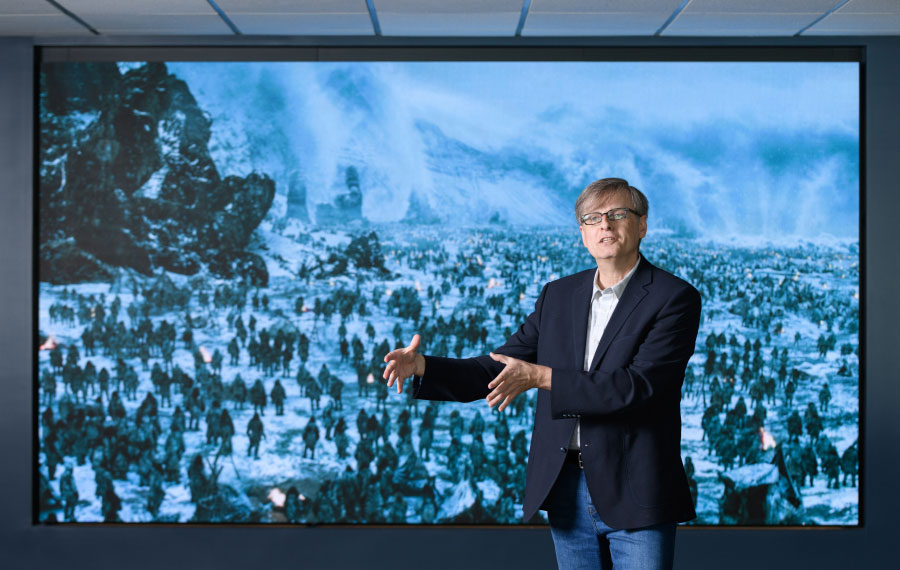
“While it is set in a fictional past, it raises a host of issues about our past, present, and future, and provides rich opportunities to examine our current interplay of cultures, politics, and social mores.”
“None of the reasons for Game of Thrones’ popularity — attractive world building,
thriller-fiction pacing, complex characters, sexposition, bait-and-switch plot, escapist
fantasy, intricate power play, clever play with archetypes, diverse female characters,
guilt-free barbarism and violence, Sopranos-like family drams — is intrinsically
‘medieval,’” Utz said.
While the global fascination with Game of Thrones is sometimes seen as a recruitment opportunity by scholars of the Middle Ages, focusing on the books and HBO show from a traditional medievalist’s perspective is too limiting and self-serving.
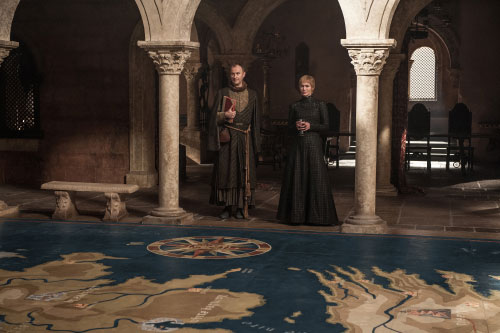
“It is a global phenomenon. It is the most widely watched television show in the world ever,” he said. “While it is set in a fictional past, it raises a host of issues about our past, present, and future, and provides rich opportunities to examine our current interplay of cultures, politics, and social mores.”
Utz has written about his aversion to the use of novelist Martin’s world as way to lure students into studying the Middle Ages.
“Classes on the Middle Ages rarely need advertising because of the general cultural love affair students have with medievalist topics,” he said. “Game of Thrones needs to be studied as a contemporary media phenomenon that uses a vague ‘medieval feel’ as one of its attractions.”
In fact, he finds it notable that one of the main characters, Sansa Stark, began the series seeking the trappings of the romantic ideal of the Middle Ages — princesses, knights, and all — only to see that fairy tale viciously taken from her at every turn.
“Watch out for Sansa Stark in season 8,” he predicted. “She will play a major role in how the story unfolds, as will some of the other women whose paths have been transformed throughout the series. Like in classical drama, it’s the survivors who, having learned many difficult lessons, are the real heroines of this story.”
But he does see Martin’s stories and especially the HBO adaptation as an excellent place to meet students where they already are — invested in stories that are indelibly shaped by our current experiences, while retaining the enduring fascination with all things premodern.
“The premodern is an eternal mirror. On the one hand, we like to shudder at the otherness of it to reassure ourselves that we have long overcome its negative features,” he said. “On the other hand, we get to go back, fictionally, to a life that seems so much easier and unburdened by the complicated rules of contemporary civilization. Both responses are illusions, but that doesn’t mean we won’t entertain them.”
Culture Change
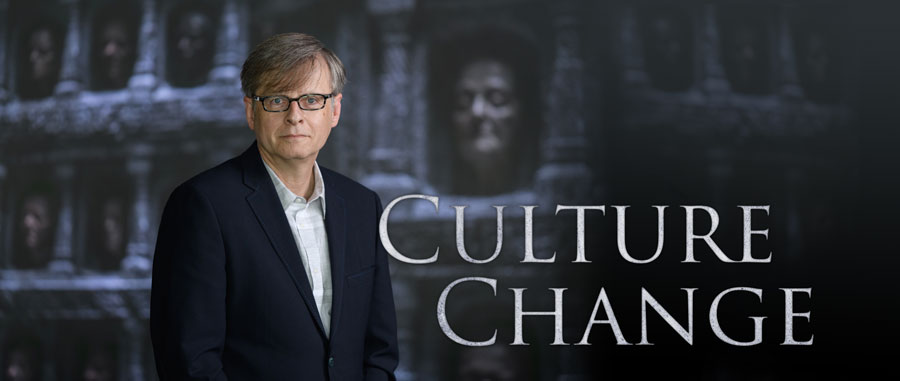
Utz plans to use the series as a case study in an upcoming class in comparative media cultures, as part of the new Master of Science in Global Media and Cultures program in LMC and the School of Modern Languages. The program is designed to prepare students to pursue professional careers that require advanced training in communication, media, language, and intercultural competency.
Utz believes that the narrative complexity of Game of Thrones is exactly the right realm within which to model the kinds of practices his students need to succeed and find fulfillment in their future jobs.
“The global city of Atlanta is in dire need of a workforce educated to be skilled communicators across cultural and linguistic divides,” he said. “I am planning on an approach that will confront my students with a wickedly complex scenario that allows for a deep understanding of multiple governmental structures, leadership styles, gender and race relations, linguistic and cultural traditions, and human behavior, a scenario just as complex as the ones increasingly common in future work environments.”
CREDITS
Photography: Rob Felt, Game of Thrones Images courtesy of HBO
Video: Evan Atkinson, Harriss Callahan, Steven Norris, Brice Zimmerman
Writer: Michael Pearson, Michael Hagearty, Monet Fort
Editor: Stacy Braukman
Design: Harriss Callahan, Monet Fort
Production: Christine Brazill

